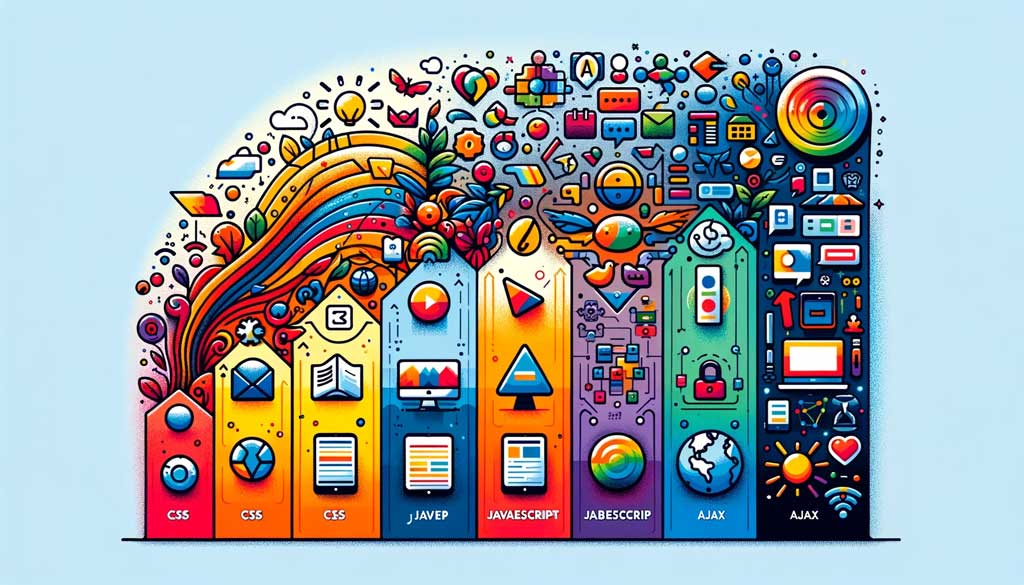The Evolution of Web Development: Trends and Predictions
The world of web development has undergone a staggering transformation since its inception, shaping the way we interact with the digital world. In this article, we'll explore the evolution of web development, highlighting key trends and offering predictions for the future.
The Dawn of Web Development
In the early days of the internet, web development was a rudimentary practice. The first websites were simple, text-based pages with minimal graphics. HTML (HyperText Markup Language) was the backbone, allowing developers to create basic structures and links between pages.
The Rise of Interactive and Dynamic Websites
As technology advanced, so did web development. The late 1990s and early 2000s saw the advent of CSS (Cascading Style Sheets) and JavaScript. These technologies enabled developers to add style and interactivity to websites, making them more engaging and user-friendly. The introduction of AJAX (Asynchronous JavaScript and XML) allowed for the creation of dynamic web applications, where parts of the page could be updated without needing to reload the entire page.
The Era of Responsive Design
With the explosion of smartphone usage, responsive web design became crucial. This approach allows websites to adapt their layout to various screen sizes, providing an optimal viewing experience on devices ranging from desktop computers to mobile phones. Frameworks like Bootstrap and Foundation emerged, simplifying the process of creating responsive designs.
Web Development Today: A Blend of Technologies
Today's web development landscape is diverse. We see a mix of traditional HTML, CSS, and JavaScript, alongside modern frameworks and libraries like React, Angular, and Vue.js. These tools have made it easier to build complex, high-performing web applications. Additionally, the rise of server-side languages like Node.js has blurred the lines between front-end and back-end development.
The Future of Web Development: Trends and Predictions
Looking to the future, several key trends are likely to shape web development:
1. Progressive Web Apps (PWAs): These apps offer a mobile app-like experience in a web browser, working offline and capable of sending push notifications. PWAs are set to become more prevalent as they provide an enhanced user experience without the need for a separate mobile app.
2. Artificial Intelligence and Machine Learning: AI and ML are increasingly being integrated into web development. Chatbots, personalized content, and automated design and testing are just a few examples of how these technologies are being used to enhance user experience and streamline development processes.
3. Voice Search Optimization: As voice assistants like Alexa and Siri become more popular, optimizing websites for voice search will become crucial. This involves understanding natural language processing and ensuring websites can be easily navigated through voice commands.
4. API-First Design: With the growth of IoT (Internet of Things) devices, an API-first approach to web development is becoming more important. This means designing the API before the actual application, ensuring seamless integration with a wide range of devices and services.
5. Motion UI: A growing trend in web design is the use of animation and dynamic graphics to enhance user engagement. Motion UI libraries are making it easier for developers to incorporate these elements without heavy coding.
6. Cybersecurity Emphasis: As cyber threats evolve, the importance of incorporating robust security measures in web development increases. Expect a continued focus on building secure web applications, with an emphasis on protecting user data.
7. Serverless Architecture: This approach involves running applications without managing the infrastructure, reducing the complexity and cost of web hosting. Serverless architectures are becoming more popular, especially for applications with variable or unpredictable traffic.
8. Low-Code and No-Code Development: Platforms that allow for web development without extensive coding are becoming more popular, enabling people without a traditional programming background to build websites and applications.
In conclusion, the field of web development is ever-evolving, driven by technological advancements and changing user expectations. As we look to the future, we can expect web development to become more intuitive, interactive, and integrated into our daily lives, reshaping the digital landscape in exciting new ways.
